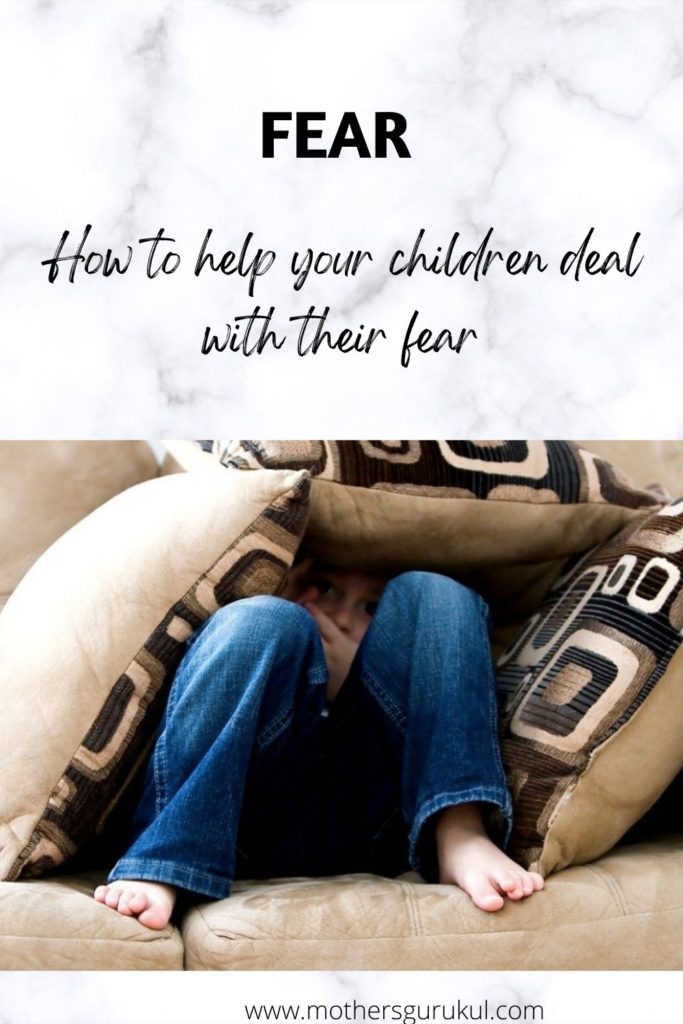Fear is there within us. No one has ever taught us how to be fearful. And there is nothing wrong with that. It is one of the 9 emotions we are born with. But when this emotion starts showing its signs more often and affects our day-to-day life, then that is when we need to take necessary actions.
It happens with kids a lot. Quite often you must have heard them saying, I am so scared for my tomorrow’s exam. We keep telling them not to worry. They will be fine, but still, they are not able to relax their mind. And if, by any chance, their exam doesn’t go very well, then it becomes a permanent feeling that I am not good at this subject and I will never be good at it. Before our child reaches this point, we should take care of it. But how? Let’s talk about that today.
Understanding fear
It can be situational and psychological. Situational fear is a form of anxiety that occurs in response to a specific situation. This type of anxiety is common and can be normal. Psychological fear is anticipation-based. There is no strong base for our thinking, but we anticipate the situation. And that feeling creates fear. It can happen to anyone. In school-going kids, it can be related to the grades or exams or teacher, in youth it can be about facing interviews, in elders it can be fear of their old age or living alone. What so ever the fear is, it can be managed with self-help strategies. But in instances where your anxiety becomes very distressing or interferes with your daily life, you may need professional treatment.
Some studies show that up to 90 percent of children between the ages of 2-14 develop at least one specific fear, with fear of animals, the dark, or imaginary monsters or ghosts being among the top issues. Most of these fears diminish over time. But some are persistent. Some limit a child’s development and opportunities.
Fight or flight response
These feelings are connected to the fight or flight response, a physiological response that involves the release of neurochemicals to get the body ready to fight for its life or run for it. When the body doesn’t fight or flee, there is nothing to burn the neurochemicals. Instead, they build up and bring intense emotion and physical sensations.
Amid high anxiety, the part of the brain that can rationalize and use logic and facts to feel safe is not at its 100%. For this reason, the best time to work with a fear is during times of calm. This is when the brain will be relaxed and receptive to any information. It will be more open to trying something different.
In this post, let’s break it down into doable actions and talk about how to deal with children’s fear.
How to help your children deal with their fear?
- Don’t lie about your own fear
- Validate your child’s feelings by acknowledging it
- Never put a child down for their fear
- Touch therapy
- Be supportive but don’t go overboard
- Step ladder approach
Don’t lie about your own fear
Children see their parents as their superheroes. According to them, their parents cannot be scared of anything. So there is no harm in accepting our fears. But also add that you are working on it. This will assure the child that fear is natural and it can happen at any age. But working on it is important.
Validate your child’s feelings by acknowledging it
Our child’s fear may not be a big deal to us, but for them, it is. Ignoring their feelings means not giving due respect to what they feel.
Never put a child down for their fear
It should not be taken as a character flaw but as an opportunity for teaching them how they managed to get over their fear in the past. It gives them strength and not embarrassment.
Touch therapy
Sometimes, just words may not be able to communicate calmness. But your physical touch will let the child know that you are there to understand them. In addition, your calm presence speaks that whatever is frightening is manageable.
Be supportive but don go overboard
As parents, we want to save our children from uncertainties and unpleasant experiences, but don’t overdo it. If you show your care in anxiety form, it will not comfort them but make them more fearful. We have to teach them to fight their fear.
Step ladder approach
To go a little deeper, we have the step ladder approach. The step ladder approach is a step-by-step way of helping children with anxiety. This is a research-based anxiety treatment used by mental health professionals. But for doing this, one should have the proper knowledge. And it should not be done as a trial game.
Wrap Up!
We want to help them manage the fear and not be squeezed out of life because their anxiety is so intrusive. We want to teach them that life isn’t as scary as it feels sometimes and that they are amazingly resilient little beings with incredible ability to cope, even when they don’t feel like it.
Related article: https://mothersgurukul.com/resilient-resilient-parent-kid-sail-tough-situation/
Related listening: Resilience


Happy to read this. I am glad that someone is talking about it. It is very important to help them and teach these things.
I am glad.
I so much loved this article Alpana, I agree that touch therapy works a lot as a parent the tips which you have shared are really great and doable.
Thank you Ruchi.
I am glad you liked it.
Again a wonderful topic Alpana. fear is a common human emotion that affects all age group of kids, once or more during their childhood journey. as a parent, it is our responsibility to teach our kids, how to deal with this positively. touch therapy is indeed a great option to make feel kids secured and connected with us.
Thank you Surbhi.
Very well put Alpana. My son has a fear of the dark and your tips are very sound. I would like to adopt a few of them.
I am glad you found it helpful.
You have well jotted down the pointers, as a parent what are the things we should do while discussing about fears of kids. I got to know about a new term step ladder approach, which seems the best way to deal with the fear among children.
Step ladder approach need to be practice with utmost care
Fear… is a word which affects not just kids but adults too. For a child we need to take him/her on a tour with us to discover the facts behind the fear and I feel it will help to overcome it.
Yes.
What a great article! As a mother of two girls, this is a very great read for me in understanding ways on how we can improve our parenting. Fear is something even we as adult don’t feel comfortable talking about. It is important to instil on our young ones great traits that can help them better humans as they grow.
Yes Jeannine. Its an emotion and there is nothing to hide.
So true. We might say, you will be fine and all but this wont make them feel better. Touch therapy would make a lot of difference. This is what I practice most
Yes, Touch therapy helps a lot.
Such a valid topic Alpana and it really needs to be addressed with so much love, loved every single point in here
Thank you Roma
The perfect way is to encourage children to take slow, deep breaths to reduce the physical reaction to fear. Great thoughts.
absolutely.
Children definitely need help in dealing with fear. Your post portrays how to support them in the journey to deal with fear. I’ve tried the touch therapy and it works wonder with my kids
Yes touch therapy does wonders at any age.
As a parent we should understand the fear and should not rub it off. Liked the approach steps you shared in the post. I also share my experiences of fear so that child opens up and shares about their silliest anxieties.
Thats great Sonal.
This is such an informative post. This post very useful to all the new parents. Thank you for sharing such useful post.
Thanks